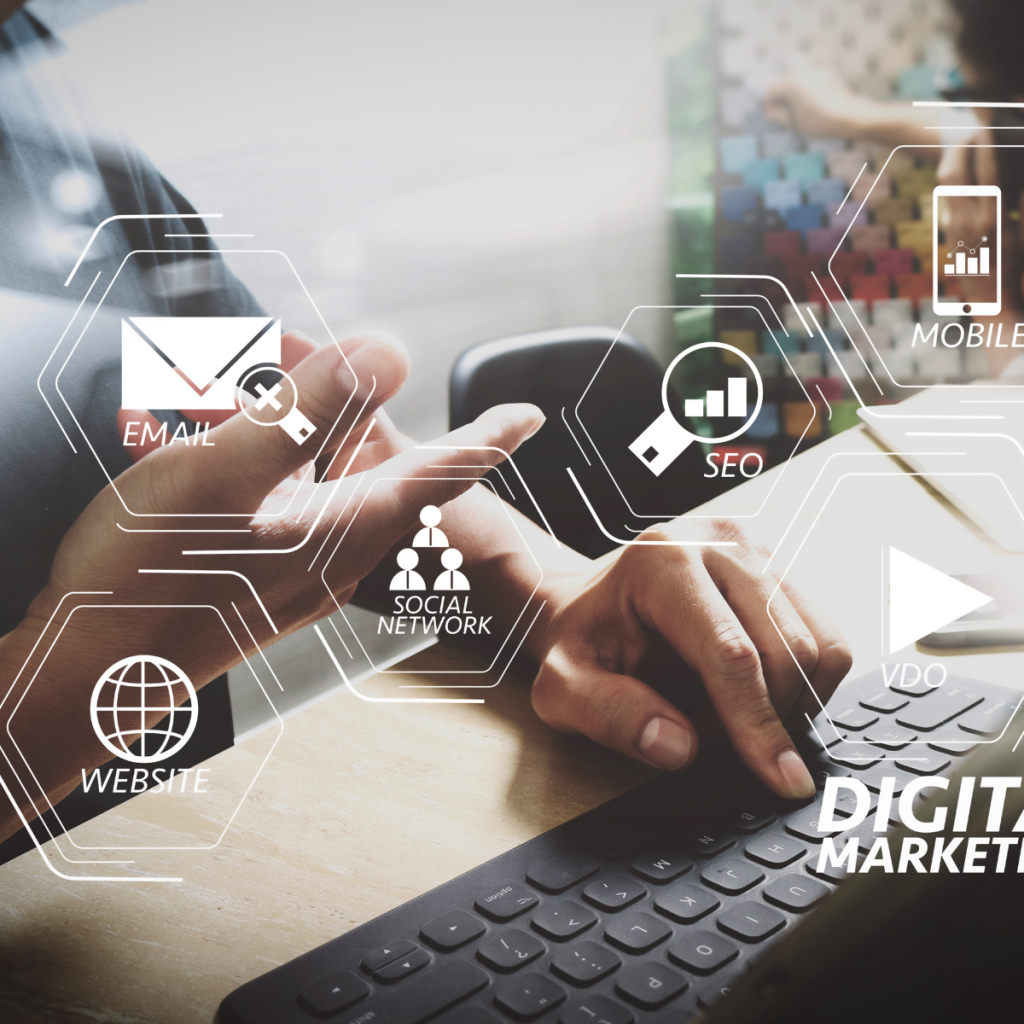In the ever-evolving world of digital marketing, businesses face a crucial question: Should they invest in content marketing or paid ads to drive traffic, generate leads, and grow their brand? Both strategies have their merits and can be highly effective, but choosing the right one depends on your business goals, budget, target audience, and long-term objectives.
In this article, we’ll explore the key differences between content marketing and paid ads, and help you decide which strategy works best for your business. We’ll also dive into the strengths and weaknesses of each, offering insights into how to use them effectively.
The Importance of Digital Marketing for Business Growth
Digital marketing has become a critical component of business success, with online channels offering unprecedented access to potential customers. With more consumers spending time online, businesses need to ensure their marketing strategies reach the right people at the right time. Two of the most popular digital marketing strategies are content marketing and paid advertising.
Content marketing involves creating valuable, relevant, and consistent content to attract and engage a target audience. The goal is to build long-term relationships with customers by providing them with useful information, entertainment, or solutions to their problems. Content marketing is an inbound strategy, meaning it draws customers in rather than pushing a product or service directly.
Paid advertising, on the other hand, is an outbound marketing strategy where businesses pay to have their ads displayed on various platforms such as Google, Facebook, or Instagram. Paid ads can drive immediate traffic to your website, create brand awareness, and generate leads or sales. However, it requires a financial investment, and the results may stop as soon as the campaign ends.
Understanding the Pros and Cons of Content Marketing
Pros of Content Marketing

- Long-Term Benefits: Content marketing is often considered a long-term investment. Once created, quality content can continue to generate traffic, build authority, and convert leads for years. Blog posts, videos, and social media posts can rank in search engines and be discovered by users long after they’ve been published.
- Builds Trust and Credibility: By providing valuable content, businesses can position themselves as industry experts and build trust with their audience. Trust is crucial for customer loyalty, and content marketing helps establish a relationship with potential customers before they even make a purchase.
- Cost-Effective: While creating high-quality content requires time and effort, content marketing is often more cost-effective than paid ads. Once content is created, it continues to work for you without ongoing costs. This makes it an attractive option for businesses with limited advertising budgets.
- SEO Benefits: Content marketing plays a critical role in improving your website’s SEO. By producing keyword-optimized blog posts, articles, and other types of content, you can increase your chances of ranking higher in search engine results pages (SERPs), driving organic traffic to your site.
Cons of Content Marketing
- Time-Consuming: Unlike paid ads that deliver immediate results, content marketing is a slow-burn strategy. It takes time to create high-quality content, optimize it for SEO, and build an audience. If you’re looking for quick results, content marketing may not be the best approach.
- Requires Expertise: Creating content that resonates with your audience and ranks well on search engines requires a certain level of expertise. Businesses may need to hire skilled writers, content strategists, or SEO experts to ensure their content performs well.
- Results May Be Unpredictable: While content marketing has long-term benefits, the results can be unpredictable. Not every piece of content will go viral or generate the desired results. It requires consistent effort and experimentation to see the fruits of your labor.
Understanding the Pros and Cons of Paid Ads
Pros of Paid Ads
- Immediate Results: Paid advertising delivers quick results. Whether you’re running a Google Ads campaign, Facebook Ads, or any other paid platform, you can start seeing traffic and conversions as soon as your ads go live. This makes it an excellent choice for businesses looking to boost their presence quickly.
- Highly Targeted: One of the biggest advantages of paid ads is the ability to target specific demographics, interests, and behaviors. Platforms like Facebook, Google, and LinkedIn allow you to target users based on factors such as age, gender, location, search intent, and more. This ensures that your ads are shown to the most relevant audience.
- Scalable: Paid ads can be scaled quickly depending on your budget and campaign performance. If you’re seeing a good return on investment (ROI), you can increase your ad spend to reach even more potential customers. This scalability makes paid advertising an attractive option for businesses of all sizes.
- Brand Awareness: Paid ads help increase brand visibility and awareness. Even if users don’t click on your ads, they still see your brand name and message. This repeated exposure can lead to greater recognition and trust over time.
Cons of Paid Ads
- Ongoing Costs: Unlike content marketing, which can provide long-term benefits, paid ads require continuous financial investment. Once the budget runs out, the traffic stops. This can make paid ads less sustainable in the long run, especially for businesses with limited budgets.
- Ad Fatigue: Over time, your target audience may experience ad fatigue—when users become desensitized to seeing the same ads repeatedly. To overcome ad fatigue, you need to constantly refresh your ad creatives and targeting.
- Complicated to Manage: Running paid ads requires ongoing monitoring, optimization, and adjustment. You need to track your ad performance, test different creatives and messages, and adjust your bidding strategies to ensure you’re getting the best results. For businesses without dedicated ad managers, this can become overwhelming.
- Limited Control Over Platforms: With paid ads, you’re at the mercy of the advertising platforms’ rules and policies. If a platform changes its algorithm or ad policies, it can significantly affect your campaigns and ROI.
Which Strategy Works Best for Your Business?
Now that we’ve explored the pros and cons of both content marketing and paid ads, let’s break down when each strategy works best:

When to Choose Content Marketing
- Long-Term Strategy: If you’re looking for a sustainable, long-term strategy that builds trust and authority over time, content marketing is the way to go.
- SEO Focused: If your goal is to improve organic search rankings and drive free, ongoing traffic to your website, content marketing is essential.
- Limited Budget: If you have a limited advertising budget and need to invest in a cost-effective strategy, content marketing can deliver results without ongoing costs.
- Building Brand Authority: If you want to position your brand as an authority in your industry, creating valuable, insightful content will help establish your credibility.
When to Choose Paid Ads
- Immediate Results: If you need quick results, such as an influx of website traffic, leads, or sales, paid ads are the best option.
- Targeted Campaigns: If you have specific products or services you want to promote to a particular demographic, paid ads allow for precise targeting.
- Scalability: If you’re looking to scale quickly and need a flexible, measurable strategy, paid ads are ideal.
- Brand Awareness: If your goal is to increase brand visibility, paid ads can quickly put your business in front of a large audience.
The Ideal Strategy: Combining Content Marketing and Paid Ads
While both strategies are powerful on their own, the best approach often involves a combination of content marketing and paid ads. Content marketing can serve as the foundation for your SEO efforts and build long-term relationships with customers, while paid ads can deliver immediate results and amplify your content’s reach.

For example, you can create high-quality blog posts, videos, or infographics to provide value to your audience, and then use paid ads to promote this content to a broader audience. You can also retarget visitors who engaged with your content but didn’t convert, helping you nurture leads and move them further down the sales funnel.
Conclusion: Choosing the Right Strategy for Your Business
Ultimately, the choice between content marketing and paid ads depends on your specific business goals, budget, and timeline. Content marketing is a great choice for businesses seeking long-term results, building brand authority, and improving SEO. Paid ads, on the other hand, are ideal for businesses needing quick results, targeted campaigns, and scalable growth.
For many businesses, a combination of both strategies is the most effective way to achieve both short-term and long-term success. By understanding the strengths and weaknesses of each approach, you can make an informed decision that aligns with your business goals and drives meaningful results.

Leave a Reply